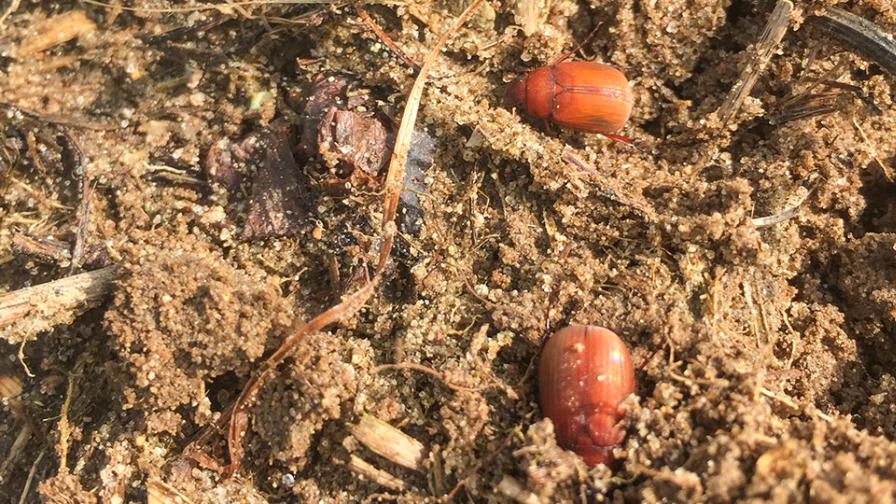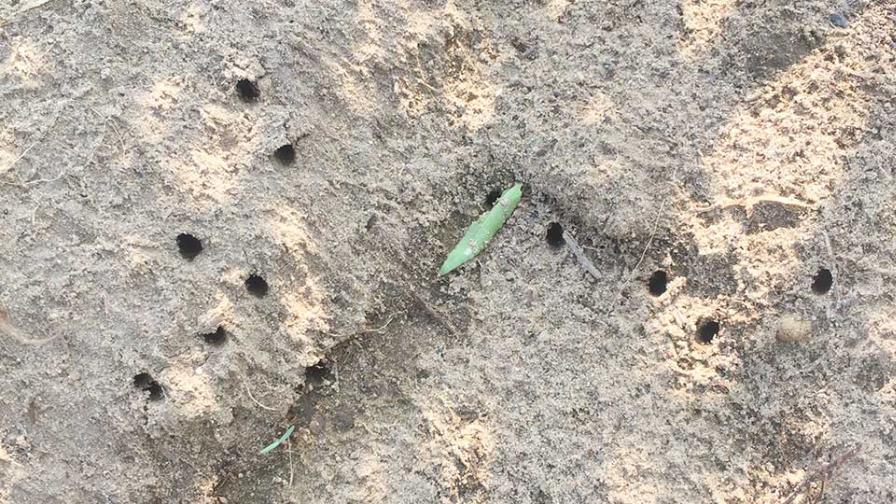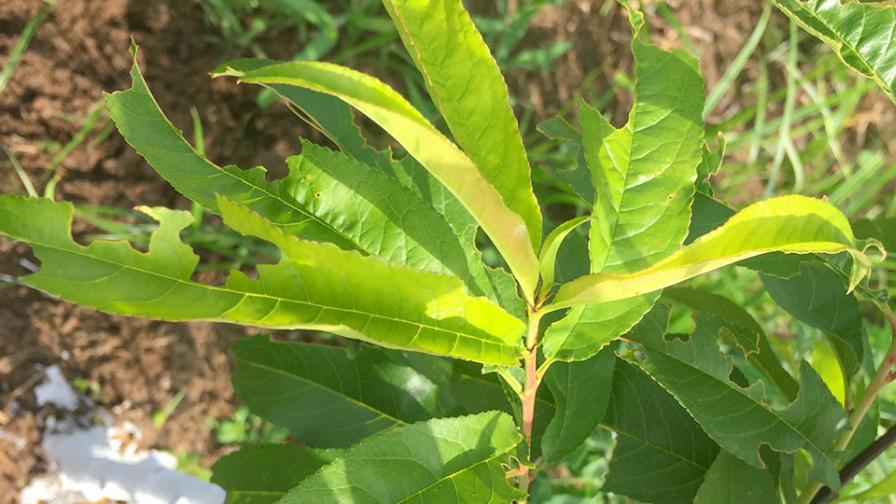Asiatic Garden Beetle Is a Puzzling New Pest for Stone Fruit Growers

The Asiatic garden beetle adult is about three-eighths of an inch long — smaller than the Japanese beetle — and chestnut brown with a slight sheen.
Photo by Bill Shane
Over the past five or more years, a relatively “new” beetle, the Asiatic garden beetle, has become a significant pest in peach nurseries and young plantings in lower Michigan and elsewhere.
The Asiatic garden beetle is known in Northeastern Asia, Russia, and since its introduction in New Jersey in 1921 it has been reported from Maine to North Florida and west to Kansas. This beetle is already well known to field-crop specialists and farmers in Michigan and surrounding states.
In field crops, the tiny, immature, white grub is the culprit, feeding on roots in massive numbers. High numbers of the Asiatic garden beetle have been associated with stunted corn stands in Michigan since as early as 2007. In tree fruit, heavy feeding damage to above-ground terminal growth can seriously stunt newly established trees and rootstock liners in nurseries. Damage to blueberry roots by the larvae have been reported.
The Asiatic garden beetle adult is about three-eighths of an inch long — smaller than the Japanese beetle — and chestnut brown with a slight sheen. Grubs are c-shaped, white to tan, up to three-eighth inch long with light-brown heads. Adults emerge from soil in early summer, with most feeding activity in July and August in Michigan — earlier in more southern locations.
Like Japanese beetles, and unlike stink bugs, adults and soil-borne grubs have chewing mouth parts. Females lay approximately 60 eggs, and the hatched grubs feed on roots and organic matter, overwinter deep in the soil, and pupate the following spring.
What makes the adult Asiatic garden beetles hard to detect is their nighttime behavior for feeding, mating, and egg laying. Unlike the Japanese beetle, during the daytime the adult Asiatic garden beetle burrows in the soil, often as deep as 4 inches during the heat of the day, escaping detection by field scouts.
Feeding damage to foliage can be mistaken for that caused by grasshoppers. Unlike Japanese beetle adults, which can chew numerous clusters of small holes in leaves, the Asiatic garden beetle will generally first feed on leaf margins and work its way to the veins.
One of the clues that Asiatic garden beetles may be present on-site is the presence of numerous ¼-inch diameter holes in the soil close to the plants with feeding damage. These are the exit points where the adult beetles emerge from the soil in the nighttime. The adult beetles are attracted to lights during the evening.

One of the clues that Asiatic garden beetles may be present on-site is the presence of numerous 1/4-inch diameter holes in the soil close to the plants with feeding damage.
Photo by Bill Shane
Temperature affects the movement of the adult beetles. At nighttime temperatures below approximately 70°F, beetles tend to crawl to aboveground food sources. At higher temperatures adults will fly to food sources.
The Asiatic garden beetle has an incredibly large host range with damage reported on many fruit, vegetable, and ornamental plants. Asiatic garden beetles often have a strong association with certain weeds. Marestail plant, orange hawkweed, Queen Anne’s lace, and giant ragweed are some of the weeds that are a favored food source.
Clusters of 30 or more adult beetles can sometimes be found on the roots of a single weed. We have found that feeding damage on young fruit trees can temporarily increase if weeds in the planting are removed, causing the adult beetles to seek out other nearby food sources.

Unlike Japanese beetle adults, which can chew numerous clusters of small holes in leaves, the Asiatic garden beetle will generally first feed on leaf margins and work its way to the veins.
Photo by Bill Shane
Asiatic garden beetles have their greatest impact in fruit plantings by chewing on foliage of young trees, inhibiting growth and early establishment. The bright spot is that adult beetles are relatively easy to kill with contact insecticides with residual action, aimed at the lower plant canopy. Several applications may be needed to deal with waves of adults emerging from the soil over several weeks.










